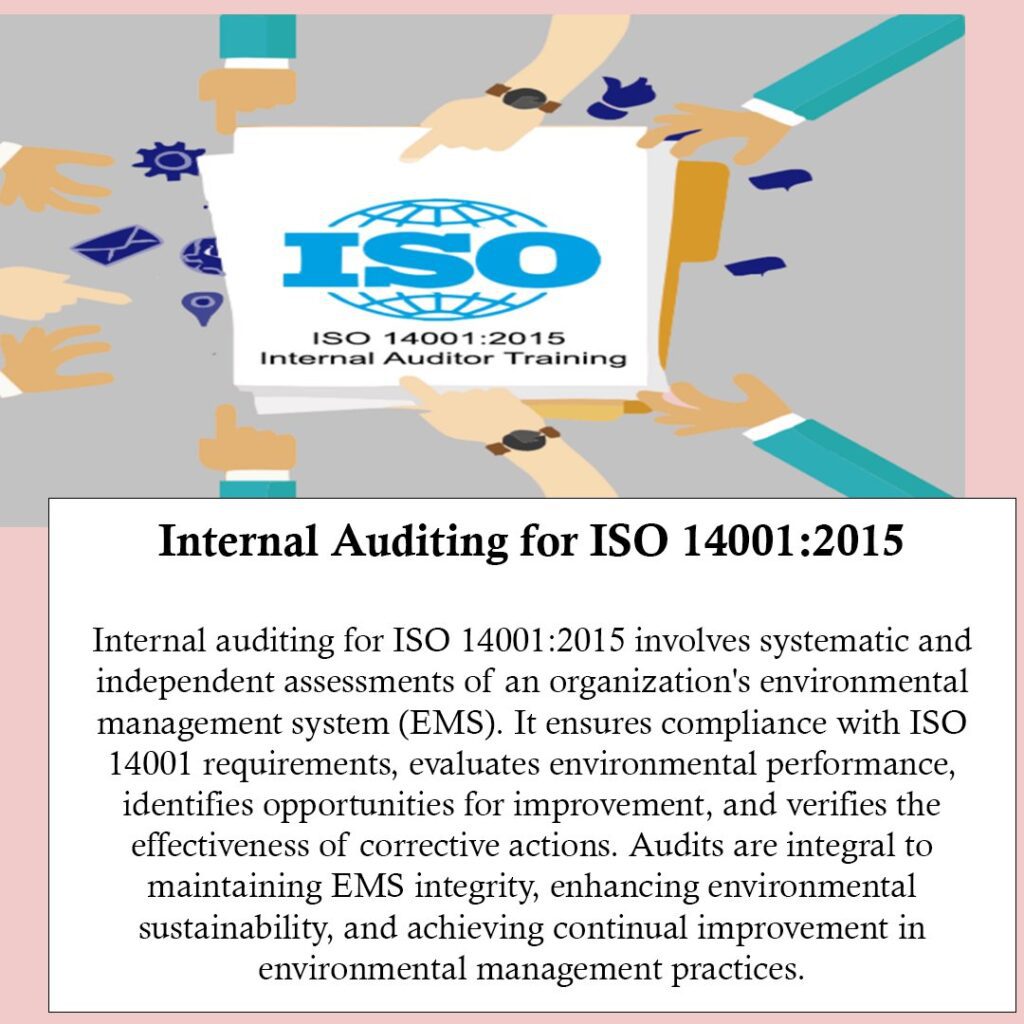Subtotal $0.00

Internal auditing is a crucial component of ISO 14001:2015, the international standard for environmental management systems (EMS). It serves as a systematic and independent examination of an organization’s EMS to determine whether environmental objectives are achieved, processes are effectively implemented, and compliance with applicable legal and regulatory requirements is maintained. This article provides tips and best practices for conducting effective internal audits within the framework of ISO 14001:2015, aiming to enhance environmental performance, ensure continual improvement, and drive organizational excellence.
Importance of Internal Auditing
Internal audits play a pivotal role in the successful implementation and continual improvement of ISO 14001:2015. Key reasons why internal auditing is important include:
Tips and Best Practices for Effective Internal Audits
Conclusion
Conducting effective internal audits is essential for ensuring the successful implementation, continual improvement, and compliance of ISO 14001:2015 within organizations. By following best practices—such as thorough planning and preparation, risk-based auditing, objective reporting, timely corrective actions, continuous improvement, auditor competence, and transparent communication—organizations can optimize their environmental management systems, enhance environmental performance, and achieve sustainable business success. Internal audits serve as a valuable tool for evaluating EMS effectiveness, identifying opportunities for enhancement, and demonstrating organizational commitment to environmental stewardship and regulatory compliance. By integrating internal audits into their overall management framework, organizations can foster a culture of accountability, transparency, and continual improvement that drives environmental excellence and contributes to a healthier, more sustainable planet for future generations.